Since every record starts with a blue number, you can threshold on blue-ish colors using the HSV color space to mask these texts. On that mask, use morphological closing, to get "boxes" from these blue texts. From that modified mask, find the contours, and determine their upper y coordinate. Extract the single records from the original image by slicing from one y coordinate to the next (+/- a few pixels) and using the full image width.
Here's some code for that:
import cv2
import numpy as np
# Read image
img = cv2.imread('CfOBO.png')
# Thresholding blue-ish colors using HSV color space
hsv = cv2.cvtColor(img, cv2.COLOR_BGR2HSV)
blue_lower = (90, 128, 64)
blue_upper = (135, 255, 192)
blue_mask = cv2.inRange(hsv, blue_lower, blue_upper)
# Morphological closing
blue_mask = cv2.morphologyEx(blue_mask, cv2.MORPH_CLOSE, np.ones((11, 11)))
# Find contours w.r.t. the OpenCV version
cnts = cv2.findContours(blue_mask, cv2.RETR_EXTERNAL, cv2.CHAIN_APPROX_NONE)
cnts = cnts[0] if len(cnts) == 2 else cnts[1]
# Get y coordinate from bounding rectangle for each contour
y = sorted([cv2.boundingRect(cnt)[1] for cnt in cnts])
# Manually add end of last record
y.append(img.shape[0])
# Extract records
records = [img[y[i]-5:y[i+1]-5, ...] for i in range(len(cnts))]
# Show records
for record in records:
cv2.imshow('Record', record)
cv2.waitKey(0)
cv2.destroyAllWindows()
There's plenty of room for optimization, e.g. if the last record has some large white space following. I just added the image bottom for the lower end of the last record. But, the general workflow should do what's desired. (I left out the following pytesseract stuff.)
----------------------------------------
System information
----------------------------------------
Platform: Windows-10-10.0.16299-SP0
Python: 3.9.1
NumPy: 1.20.1
OpenCV: 4.5.1
----------------------------------------

